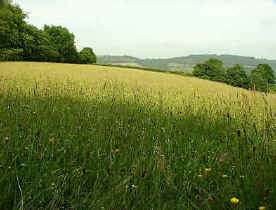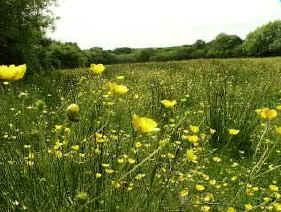Lowland meadows can be differentiated into two major types:
- Hay meadows on well drained soils.
- Wet meadows which are often low lying and with poor drainage, or
alongside streams and rivers. The soil is saturated and water logged for varying lengths
of time through the year. If the ground is dry enough in late summer to be accessible to
machinery, a hay crop may be harvested, otherwise these meadows will just be grazed.
This category includes flood meadows, which may be flooded in wet winters. Such regularly
flooded meadows are often called water meadows. In the past it was traditional,
particularly in parts of southern England, to manage water meadows using a system of
ditches to irrigate fields alongside rivers. This could usually guarantee to bring in an
early crop of lush spring grass. However, maintaining the ditches and sluices needed to
operate the system is very labour intensive and time consuming. As a result, the
traditional management of water meadows is now largely defunct.
The different types of meadow are characterized by having different
plant communities, although there may be a certain amount of overlap in species. Because
of the differences in dominant plant species, they also tend to have different animals
associated with them as well. As with all habitat classification systems, there are no
hard and fast boundaries. A dry hay meadow may grade into a wet meadow, or there may
be areas of wet, poorly drained meadow within an essentially dry one. |

